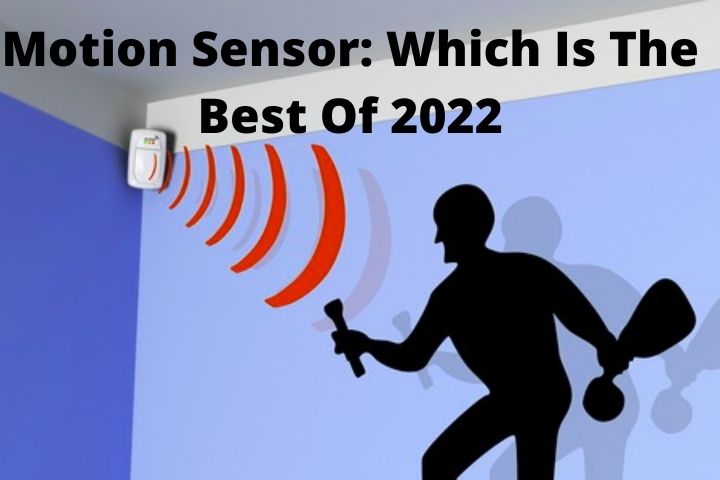Motion Sensor : In a context in which Internet of Things (IoT) technology is increasingly present, which never stops surprising us with new and fascinating applications, the truth is that motion sensors continue to be a completely everyday element. Not only do they make our lives easier, but they also help us reduce the electricity bill.
Thus, it is not surprising that there is such a variety of models and with so many different features. At the same time, its applications continue to increase, although the most common are as an alarm system and to turn lights on and off automatically. Thus, its increasingly common use is both in businesses and offices as well as at home.
Table of Contents
The Most Important
- Motion sensors have a wide variety of applications. They can be used both in alarms and in control systems for lighting, refrigeration and even air conditioning in homes, offices, businesses and public spaces.
- Motion sensors not only make our lives easier, they also allow us to reduce energy consumption, with the consequent economic and environmental advantages that this entails.
- Before buying a motion sensor, it is convenient that you are clear about what use you are going to make of it, since the range and detection angle that you are going to need to offer you will depend on it. And, of course, it is important that it allows you to configure the operation time.
The Best Motion Sensors On The Market: Our Recommendations
In this section, we present the selection of motion sensors that we have prepared for you. We have elaborated it trying to include very varied articles. In it, you can find from the favorite option of online users to the best option for outdoors. Of course, all ensure a very good value for money.
- The favorite of online users
- Lamp and motion sensor, all in one
- The best option for outdoors
- The Philips outdoor motion sensor, the most complete option
Best Motion Sensor:
- SEBSON Motion Sensor with alarm and sound for shops, Doorbell Alarm, Battery Powered
Motion sensor with alarm and buzzer alarm at a really affordable price, which has made it a real best seller. It has a range of 8 meters and an angle of 60º, although the sensor housing can be rotated 360º for easier installation.
It can also be used as a passage detector, making it ideal for use in shops as a customer entry warning system.
- Steinel RS 16 L white – Sensor ceiling light for indoors
An excellent combination of lamp and motion sensor with a detection angle of 360º and a detection range of 3 m to 8 m. Accepts light bulbs up to 60 W (watts) of power. The timer can be set in a range between 5 seconds and 15 minutes.
It comes in a simple design ideal for use in corridors, halls or stairs. In addition, it can be installed both on the ceiling and on the wall.
- SEBSON Outdoor Motion Detector IP44, Surface Wall Mounting
Great outdoor infrared motion sensor with IP44 protection level. It has a maximum range of 12 m and a detection angle of 180º. The operating time can be adjusted between 10 seconds and 15 minutes.
Its installation is very simple, it is also adjustable, so you can better adjust the detection area. And its price is really cheap. Without a doubt, it is a magnificent alternative to automate lighting.
Shopping Guide: What You Should Know About Motion Sensors
If you are determined to buy a motion sensor, it is essential that you take into account a series of important issues related to this type of device. Remember that there are different motion sensor models designed for different types of applications. For this reason, in this section we intend to clarify the main doubts you may have.
What exactly are motion sensors?
Motion sensors are electronic devices that are made up of receiving and emitting units of generally infrared signals, which react to the movement produced in a certain area. In this way, they can activate from light bulbs to alarms, through air conditioning equipment.
What are the advantages and disadvantages of motion sensors?
The use of motion sensors offers a series of important advantages and inevitably the odd drawback. We have summarized both in the following table.
How do motion sensors work?
In general, motion detectors detect movement thanks to their infrared sensors or changes in temperature or amount of light. When this happens, the mechanism of the device activates according to its programming and turns on the lights or connects any other electronic element, such as fans, air conditioners or radiators.
What types of motion sensors are there?
Motion sensors can be classified into three large groups: active, passive and dual. Currently, passive motion sensors or PIR are the most used in alarms and in general they usually work with infrared. They are called passive because they do not emit energy, but instead detect energy changes in space.
Active sensors, on the other hand, do emit energy, and are classified based on this into active sensors: microwave, ultrasound, vibration and reflective movement. Finally, the dual ones combine both active and passive receivers, with the advantage of being much more reliable against false alarms.
